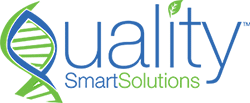From FDA guidelines to global regulatory standards, understanding the nuances of each requirement is essential to ensure a timely and successful drug submission. Our experts have analyzed the latest updates and compiled a comprehensive guide to help you stay ahead of the curve.
In the dynamic and highly regulated world of pharmaceuticals, staying ahead of the game is not just a competitive advantage; it’s a necessity. Understanding the latest requirements for new drug submissions is essential for pharmaceutical companies seeking to bring new drugs to market. This article delves into the key insights that can keep your drug development process on track and compliant with evolving regulations while highlighting the substantial benefits of investing in new drug submissions. Check out our dedicated page for ANDS and NDS submissions for more information.
The Evolving Landscape of New Drug Submissions
The landscape of new drug submissions is continuously evolving. Regulatory authorities such as the U.S. Food and Drug Administration (FDA), the European Medicines Agency (EMA), and others worldwide regularly update their guidelines and requirements. Staying informed about these changes is paramount, allowing pharmaceutical companies to adapt swiftly and ensure their submissions meet the latest standards.
Navigating the Regulatory Maze: A Worthwhile Investment
One of the first steps in preparing a new drug submission is identifying your product’s specific regulatory pathway. Different types of drugs (e.g., small molecules, biologics, generics) often follow distinct regulatory routes. Understanding which path your prescription falls under is crucial to meeting the correct submission requirements.
Investing in a well-versed regulatory affairs team or partnering with experts in the field can streamline this process. Pharmaceutical companies can confidently avoid costly delays and navigate the regulatory maze by doing so.
Quality Data Is King: Ensuring Successful Approvals
The quality of the data submitted is a cornerstone of a successful new drug submission. Rigorous testing and documentation of the drug’s safety, efficacy, and manufacturing processes are paramount. The FDA and other regulatory bodies emphasize the importance of comprehensive and well-organized data to support a submission.
Investing in robust data collection, analysis, and documentation processes is not just a regulatory requirement; it’s a strategic investment in the success of your drug. A well-prepared submission can increase the likelihood of timely approvals and market access.
Benefit-Risk Assessment: A Strategic Advantage
Assessing the benefit-risk profile of your drug is a central focus for regulatory authorities. It would be best to thoroughly analyze the drug’s benefits compared to its potential risks. A well-structured benefit-risk assessment can make a difference in the approval of your submission.
Investing in comprehensive benefit-risk assessments during drug development can enhance your product’s competitive edge. By proactively addressing potential risks and demonstrating superior benefits, your drug stands a better chance of receiving regulatory approval.
Patient-Centricity and Real-World Data: Gaining Market Advantage
Regulatory agencies increasingly value patient-centric approaches and real-world data in assessing drug submissions. Demonstrating how your drug meets patients’ needs and leveraging real-world evidence can strengthen your proposal.
Investing in patient engagement and real-world data collection aligns with regulatory expectations. It resonates with healthcare providers, payers, and patients. It can differentiate your product in the market and accelerate its adoption.

Global Harmonization: Expanding Market Reach
Global harmonization initiatives aim to align regulatory requirements across different regions. Understanding and navigating these harmonization efforts can simplify the submission process for drugs intended for multiple markets.
Investing in a global regulatory strategy can maximize market reach and profitability. By aligning submissions with international standards, pharmaceutical companies can reduce duplication of efforts and capitalize on larger patient populations.
Digital Submissions and eCTD: Efficiency and Compliance
The move toward electronic Common Technical Document (eCTD) submissions is becoming more prevalent. Familiarizing yourself with eCTD formats and requirements is crucial for a smooth submission process.
Investing in digital submission capabilities enhances efficiency and compliance. It streamlines document management, accelerates review processes, and reduces the risk of errors.
Post-Submission Interaction: Collaboration Yields Success
The interaction between the pharmaceutical company and regulatory authorities continues after submission. Engaging in a collaborative dialogue and promptly addressing questions and concerns raised during the review process can significantly impact the outcome.
Investing in effective communication and a responsive regulatory affairs team can lead to faster approvals and a more favorable regulatory relationship.
Conclusion: A Sound Investment in Patient Health and Market Success
In conclusion, new drug submissions are not just a regulatory requirement; they represent a sound investment in patient health and market success. By staying informed, prepared, and flexible, pharmaceutical companies can successfully navigate the complex world of drug submissions. The benefits include expedited market access, enhanced competitiveness, and, most importantly, the opportunity to bring life-changing therapies to needy patients. As the pharmaceutical landscape evolves, those who invest wisely in new drug submissions stand to reap the rewards of innovation and impact.








